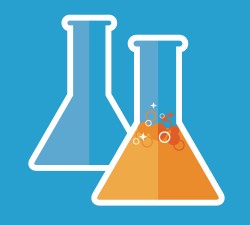We use cookies to make your experience better. To comply with the new e-Privacy directive, we need to ask for your consent to set the cookies. Learn more.
TCLP Analysis: How Environmental Regulators Test Your Battery Wastewater
If you're washing your forklift batteries (and you are washing them, right?) then you're also producing hazardous waste. Battery wash water contains traces of sulfuric acid and toxic metals that the EPA regulates heavily.
In order to avoid enormous fines and possibly even criminal charges, every facility manager should understand exactly how the EPA goes about determining whether your wastewater — and any byproducts of the treatment process — can be considered "hazardous waste." 
So what exactly does the EPA mean when they use the term? Regulators consider a waste product “hazardous” if it exhibits one or more of these four characteristics:
-
Ignitability.
A substance is considered unacceptably flammable if it has a flashpoint that's below 140° (60°).
-
Corrosivity.
Acids and bases that corrode materials and cause chemical burns must be kept out of landfills. If your waste has an aqueous pH below 2 or above 12.5, it's considered officially corrosive.
-
Reactivity.
Reactive substances are explosive or unstable, or they may react violently with water.
-
Toxicity.
Toxic substances are harmful or even fatal when they enter the human body, either through ingestion or absorption. Forklift fleet wastewater has high levels of lead and other heavy metals that the EPA defines as toxic.
The wastewater produced by washing forklift batteries usually exceeds EPA limits of toxicity, and the law calls for a very specific procedure to make that determination. That test is called the Toxicity Characteristic Leaching Procedure, or TCLP. EPA officials rely on TCLP results to formally define your wastewater as hazardous due to excess toxicity.
The TCLP simulates landfill conditions to determine whether toxic substances in waste are likely to leach out and pollute the water table. It’s called for by name in the Resource Conservation and Recovery Act, which requires generators of hazardous waste to complete a TCLP and present the EPA with the findings.
While waste generators are responsible for performing a TCLP on all potentially hazardous waste, they can (and probably should) hire an independent lab to perform the test. Lab technicians will start by taking a sample according to the EPA's exacting protocols.
The lab will then analyze the sample to see if it contains any regulated substances. The EPA provides minimum legal limits for 40 contaminants that can damage human health. Several of the heavy metals found in forklift battery wash water are on the list, including lead, which is prominent in battery room wastewater.
What to do When a Toxicity Characteristic Leaching Procedure Proves Waste Hazardous
If TCLP analysis shows levels of pollutants that exceed legal limits (as set out in the Code of Federal Regulations, Title 40, Part 261, Subpart C), the waste generator is responsible for treating that waste until it's safe for disposal.
The good news is that treatment can be easy and relatively low-cost with the right equipment. The BHS Wastewater Recycling System (WRS) provides on-site wastewater management that's fully compliant with all EPA regulations. It removes pollutants from water, sealing them in a bentonite clay cake that's safe — and legal — for landfills.
BHS provides free TCLP analysis with the purchase of a WRS, saving you the trouble and expense of hiring a lab. If you generate wastewater at your facility, the BHS WRS offers an ideal way to comply with federal and local environmental regulations.
References:
“Characteristic Wastes.” EPA. United States Environmental Protection Agency, 8 May 2013. Web. 30 Oct. 2015.
“The EPA TCLP: Toxicity Characteristic Leaching Procedure and Characteristic Wastes (D-Codes).” EHSO. Benivia, LLC, n.d. Web. 30 Oct. 2015.
“RCRA Waste Sampling Draft Technical Guidance.” United States Environmental Protection Agency, Aug. 2002. PDF. 30 Oct. 2015.
